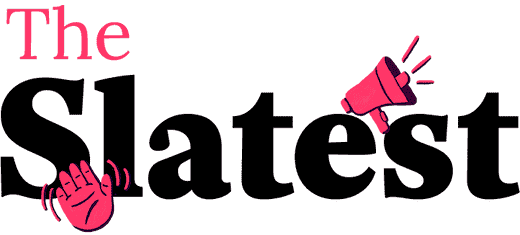Sign up for the Slatest to get the most insightful analysis, criticism, and advice out there, delivered to your inbox daily.
My trouble with the app that runs my life began this May.
In 2020, after losing a full-time job, I became a freelancer. The next year, while continuing to freelance, I started my own small business, in the honorable field of podcasting. Scattered Apple Notes could no longer keep track of my affairs. And so I found my way to Trello, a project management system typically used by startups, software teams, and type-A organizers to keep track of tasks and deadlines. Think of it as a tricked-out digital Post-it board. I began keeping lists of cards for every aspect of my life. “Buy this person a birthday present” or “Outline this story for Slate.” For select big tasks, like planning a wedding, I set up entire new boards.
Then, just before Memorial Day, Trello’s parent company, the software company Atlassian, rolled out a “new Trello.” The release came out as a beta, which I couldn’t resist, knowing that it would soon become mandatory. I quickly found myself in shambles, unable to hide features that didn’t do anything for me. On a Thursday night at 9, I sent a desperate plea to the customer service team, with whom I had developed a parasocial relationship through years of inquiries that were always answered. “I absolutely LOVE Trello,” I opened, trying for flattery first. “With that in mind, I am begging you to please make the inbox feature optional.” Despite an automated reply that assured me, “We’re on it,” I never did get an answer, nor did I figure out how to turn the thing off. (Days later, I realized I could minimize but not axe the panel.) I sent more pleas, trying to find things that were once easy to find but now eluded me. After a couple of unanswered requests over six weeks, I located a button that had once been right in front of me, now hiding in a dropdown behind a little icon at the bottom of a Trello card.
I was not alone. The past few months, the Trello community—there is such a thing!—has been dripping with collective rage about Atlassian’s changes to the platform. The 11,000-strong r/Trello subreddit is loaded with months of complaints, ranging from the puzzled to the enraged. In an “open letter to Trello leadership,” one person begins by asking, “Are you secretly conducting psychological warfare, or did a sleep-deprived intern hit ‘publish’ on your latest update by accident?” I haven’t found the update that bad, but on a scale of making my life easier to making it harder, it has leaned toward the latter.
The state of hostility between Trello’s owner and its users has broken contain and reached pockets of the technology press. Atlassian has stuck to its guns, making the update mandatory earlier this summer. To what end? A company spokeswoman told the Financial Review in Australia, where Atlassian was established, that the company was moving Trello from a project management app to “a personal productivity companion.”
It was at this juncture that I realized that Trello—my Trello, my beloved $10/month app, my tool to track when exactly DHL is going to deliver my package—is the best encapsulation of our current moment in tech. We are in a time of tech giants foisting updates on a public that hasn’t asked for them. Google, Microsoft, and Meta get the most attention for doing that with A.I. products. But I think it’s Trello, a much tinier service, that tells the most concise story of how technology companies are now looking at their users.
Microsoft has forced its 365 customers to pay more and accept access to its “Copilot” assistant, which does roughly the same document cleanup and email summary that its peers do. Meta installed a janky and privacy-corrupting A.I. search tool to Instagram. Apple began putting its underwhelming-to-many “Apple Intelligence” tool on phones by default, prompting a small industry of stories and forum posts about how to disable it. Tech companies across the board have interrupted the user experience for people who don’t want A.I. upsells. The concept of “force-feeding” and A.I. have become intertwined.
The new Trello does have a large language model component, of the extracting-info-from-emails variety. But what has chapped the angry user base seems to be not the A.I. but the unintelligible changes to the platform’s user interface. In this way, Trello is more representative of a tech trend that predates the industry’s infatuation with LLMs. Massive user experience changes without opt-outs have been the order of the day for at least the better part of a decade now. (Was the 2012 redesign of Windows 8 the starting point? Reasonable people could debate this.) The self-inflicted plight of Trello is a good reminder that A.I. didn’t push tech companies to behave this way, but more general, long-standing profit motivations did.
Google and Microsoft are emboldened to act that way because they are so hard to leave. I think what Google has done to search is gross, as a news consumer and as someone who would like media outlets’ search traffic to still exist. Still, I haven’t stopped Googling things or ditched my Gmail, because that would be an epic pain. But just as trapping users with unwanted changes isn’t limited to A.I., it’s also not limited to a handful of tech giants. Dating apps suck now, I am often told, not only because their free versions are hollowed out but also because the user interface is too gamified for engagement. Evernote, the popular note-taking app, is often derided for not just a bad free version, but general bloat. These should not, in theory, be difficult companies to just leave. You can export notes and find new dating matches.
It’s tempting to think there’s something unique about the intersection between the highest level of tech giant and LLMs. The tech is futuristic, and the giants need to keep growing exponentially forever, so we get an endless hype machine. (This is a popular argument among some tech critics today.) Wall Street’s continued blessing provides ample incentive to keep it going.
But here, again, the Trello thing lands differently. What I find bleakly interesting about it is that the problems at issue are mostly not about A.I. and are happening at a company that should not be that hard to leave. There are dozens of popular task management competitors out there, and recent liftoff of LLM-enabled vibe coding has made it possible for people to build their own (surprisingly useful) management apps. We should be living in the least opportune time for appmakers outside the Google, Amazon, Meta, and Microsoft sphere to shove unwanted overhauls down the airways of their paying customers, but bunches of companies have tried it regardless.
Which prompts the question: Why would companies that in theory couldn’t afford to antagonize their customers take this tack anyway? Perhaps the answer is imitation. This is what the world’s great companies are doing, so mine should do it too. Or maybe the answer is desperation, at least in Trello’s case. Its parent company would fit well in a season of the old HBO sitcom Silicon Valley: Its stock has been doing badly for a while, and its CEO just fired 150 people with plans to replace them with A.I. (He is also a self-styled environmentalist who reports struggling considerably with a recent private jet purchase.) But most of all, the past few months of Trello developments reflect how technology companies now interact with their customers. The past year of headlines might suggest that jerking users around with unwanted new features is the domain of a select few companies pushing a specific sort of tech. It turns out tech businesses in a much lighter weight class can do it too.



